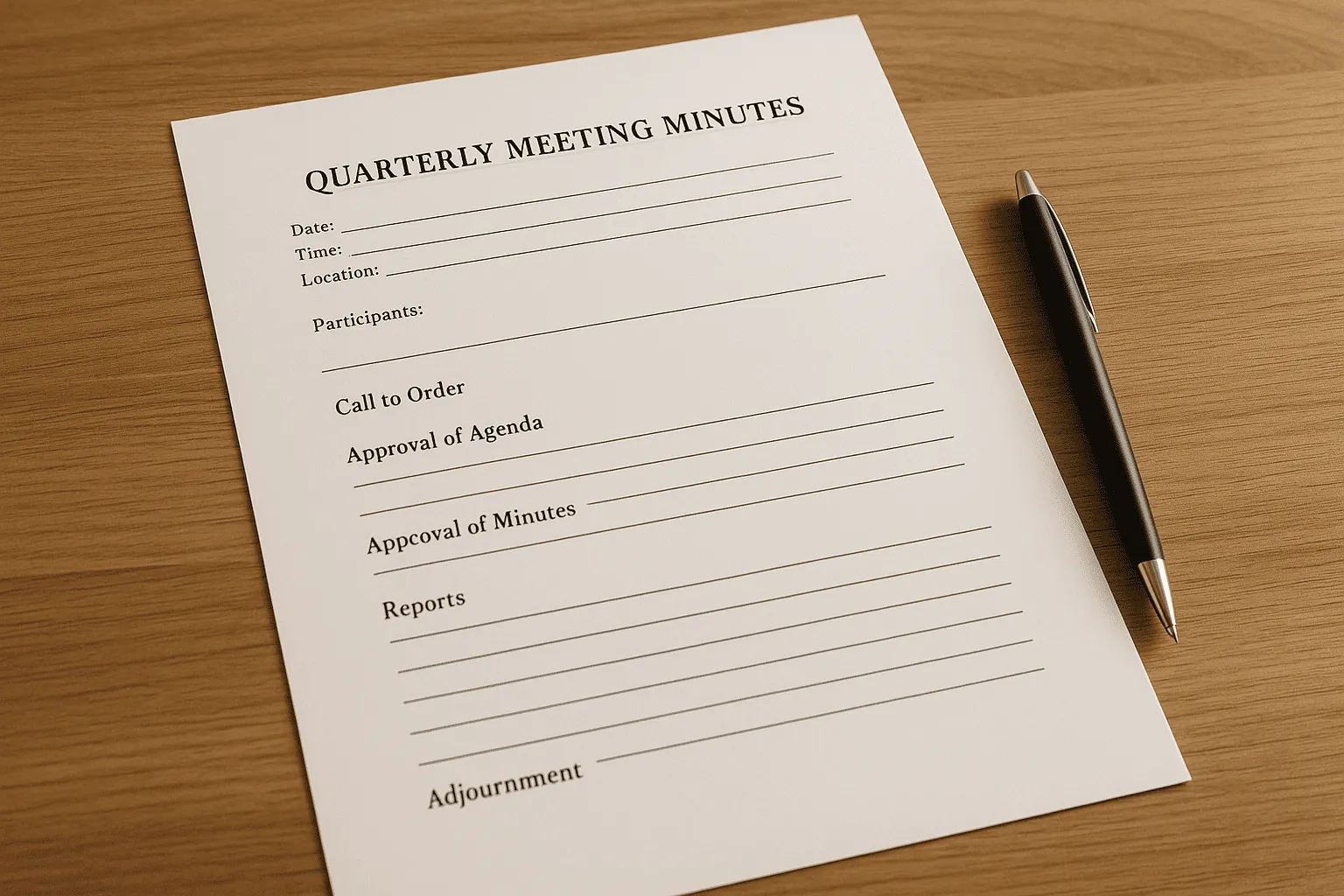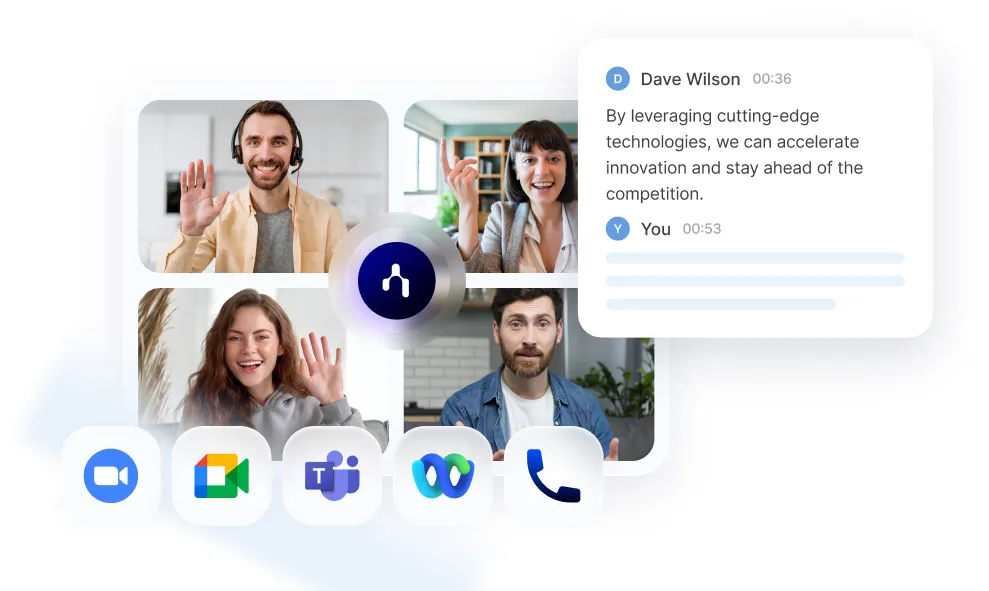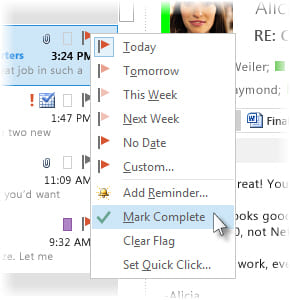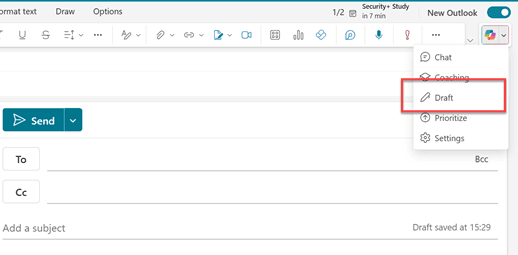Quaterly Meeting : an Actionable Guide

Get the work done for any meeting
Meeting transcription, AI custom notes, CRM/ATS integration, and more
Your last quarter flew by. Now you need one meeting to stitch it all together.
That meeting is your quarterly meeting.
In the pages that follow, you’ll learn how to host a quarterly session that actually drives action.
What Is a Quarterly Meeting?
A quarterly meeting is a strategic meeting held every three months. It checks progress, and adjusts direction at the end of the quarter and before heading into the next quarter.
Let’s say you’re running a marketing team. In your quarterly meeting, you’ll review how your campaigns performed. You’ll discuss lead quality, channel ROI, and team bandwidth. Then, you’ll decide where to double down and where to pivot.
If you’re managing a product team, you’ll go over features shipped, bugs resolved, and roadmap progress. You’ll realign on the next release and flag risks early.
Here’s what makes it different from a weekly or monthly sync:
- It’s longer. You block out 2 to 3 hours, sometimes half a day.
- It’s more strategic. You talk less about tasks, more about outcomes.
- It’s cross-functional. You often bring in voices from other teams for better alignment.
Who Should Attend a Quarterly Meeting

Your quarterly meeting only works if the right people are in the room.
Here's the one of a quarterly board meeting :
Core Strategy Circle
Start with your leadership trio.
That’s CEO, finance lead, and operations head.
Revenue Owners
Bring in your sales or customer-success manager.
Product or Service Lead
If you ship products, your product manager is vital.
If you deliver services, your delivery lead fills that seat.
Marketing Voice
Your marketing manager reports on reach, leads, and brand lift.
People Partner
Invite your HR or people-ops partner when hiring, retention, or culture shifts matter.
Data Analyst (Optional)
A data analyst clarifies metrics and dashboards on the spot.
Project Manager or Chief of Staff
A project manager captures actions, owners, and dates before everyone leaves.
Quarterly Meeting Management Best Practices
These eight best practices keep the session focused, data-driven, and actionable.
1. Define One Clear Objective
Decide what success looks like before you invite anyone.
Pick a single north-star question, such as “Are we on track to hit Q3 revenue?”
Write this objective at the top of the agenda.
Read it aloud when the meeting starts.
It will guide every discussion and cut side topics fast.
2. Share the Agenda One Week Ahead
Send a time-boxed agenda seven days before the meeting.
Include owners, time limits, and required prep work.
Ask attendees to add notes or questions in the doc.
3. Bring the Numbers, Not Assumptions
Base every talking point on concrete data.
Use a shared dashboard that updates in real time.
Pull metrics the day before the meeting and lock the snapshot.
4. Time-Box Every Segment
Assign strict time blocks to each section.
For example, “KPI Review – 20 min” or “Roadmap Risks – 15 min.”
Display a visible timer on screen.
When it hits zero, park lingering issues in a “parking lot” doc.
5. Rotate Ownership of Key Sections
Let different team members present their area each quarter.
This builds accountability and grows presentation skills.
Provide a template slide deck.
It keeps style consistent and cuts prep time.
6. Encourage Candid Participation
Open with a quick “pulse check” round.
Ask each person to rate team momentum from 1 to 5.
Use that rating to spot hidden tension.
Then invite quieter voices first during discussions.
7. Record Decisions in Real Time
Nominate a dedicated note-taker or use an AI tool like Noota.
Capture decisions, owners, and due dates as they happen.
Project the notes onto the meeting screen.
Seeing the words live prevents misunderstandings later.
8. Close with a 90-Day Action Plan
End the meeting by filling a simple table: Task, Owner, Deadline.
Limit tasks to the top five priorities.
Ask each owner to state their next step out loud.
This verbal commitment boosts follow-through.
Best KPIs to Track for Your Quarterly Meeting – and How to Capture Them

With the right numbers, you see trends, spot risk early, and prove impact. Here are the typical KPIs to look for in a quaterly meeting :
4.1 Financial KPI – Revenue vs Target
This is your headline number.
Compare booked revenue against the quarterly goal.
Split it by product line or region to find gaps fast.
How to track: Pull a frozen snapshot from your CRM on the last day of the quarter.
4.2 Customer KPI – Net Promoter Score (NPS)
Happy customers renew and refer.
NPS asks, “How likely are you to recommend us?” and scores from -100 to 100.
How to track: Send an automated survey two weeks before quarter-end. Use a widget in your help-desk tool to calculate the score in real time.
4.3 Process KPI – Project Delivery Rate
You promised work. Did you ship?
Divide completed projects by planned projects for the quarter.
Aim for 80 % or higher.
How to track: Tag Q-number on every Jira epic.
Run a saved filter that shows “Done” vs “Planned” for Q3.
4.4 People KPI – Time to Hire & Cost per Hire
Recruiting eats cash if it drags.
Time to Hire measures days from requisition to signed offer.
Cost per Hire sums ads, agency fees, and internal time.
How to track: Your ATS already stores timestamps.
Export a CSV, calculate the median, and plot it next to last quarter’s figure.
4.5 Engagement KPI – Employee Engagement Score
Motivated teams hit goals faster.
Use a short pulse survey with five questions on satisfaction, growth, and belonging.
How to track: Send at mid-quarter.
Compare to the same measure last quarter to catch morale dips early.
4.6 Meeting KPI – Action Item Completion Rate
A meeting fails if tasks die in Slack.
Track how many assigned actions reached “Done” by the next quarter.
How to track: Log every action in a shared kanban.
Close the loop in your quarterly meeting by showing the completion percentage.
4.7 Meeting KPI – Meeting ROI
Meeting ROI links time spent to value delivered. ◆Average hourly salary × total attendee hours◆ vs ◆estimated revenue or cost saved◆.
How to track: Noota or Flowtrace calculates cost automatically from calendar invites.
Add the value column manually, then review if the ratio is healthy.
Quarterly Meeting Agenda & Minutes

A clear agenda keeps your meeting on track.
Copy the templates below, drop them into your doc, and tweak.
🗂️ Quarterly Meeting Agenda Template
QUARTERLY MEETING – [Qx YYYY]
Date & Time: [MM/DD/YYYY – HH:MM]
Location / Link: [Room or Video URL]
Objective: Align on last quarter results and set next quarter priorities.
1. Welcome & Objective (5 min)
- Host: [Your Name]
- Quick outline of goals and ground rules.
2. Team Pulse Check (10 min)
- Round-table: each attendee rates team momentum 1-5.
- Note patterns or concerns.
3. KPI Review (20 min)
- Presenter: [Finance or Data Lead]
- Show dashboard snapshot. Highlight green, yellow, red metrics.
- Capture questions in “parking lot”.
4. Wins & Learnings (15 min)
- Presenter: [Any Team Lead]
- Top three successes.
- Biggest lesson learned.
5. Roadmap Progress (20 min)
- Presenter: [Product/Project Lead]
- Features shipped vs planned.
- Risks or scope changes.
6. People & Resources (15 min)
- Presenter: [People Ops / HR]
- Hiring progress, retention, capacity.
- Training or support needs.
7. Next Quarter Goals (25 min)
- Group discussion.
- Draft three key objectives and top KPIs.
- Agree on target values.
8. Action Items & Owners (10 min)
- Project Manager fills table live.
- Confirm deadlines and accountability.
9. Parking-Lot Close-out (5 min)
- Address open questions or assign owners.
10. Wrap-up & Energy Check (5 min)
- Each attendee rates confidence 1-5.
- Final comments.
How to personalize:
Replace bracketed text.
Drop or add sections to fit your team.
Adjust times if your meeting runs longer.
📝 Quarterly Meeting Minutes Template
QUARTERLY MEETING MINUTES – [Qx YYYY]
Date: [MM/DD/YYYY] | Recorder: [Name]
ATTENDEES
- [Name], Role
- [Name], Role
- [Name], Role
Absentees: [Name], Reason
SUMMARY
Objective restated: [Copy from agenda].
Overall confidence score: [Average 1-5].
KPI HIGHLIGHTS
- Revenue vs Target: [Value] (▲/▼ vs goal).
- NPS: [Score] (▲/▼ vs last quarter).
- Project Delivery Rate: [Percentage].
- Time to Hire: [Days].
Commentary: [One-sentence insight].
MAJOR DECISIONS
1. Approve Q[Next] revenue target at €[Figure].
2. Pause expansion into [Market] until Q[Next+1].
3. Hire two senior engineers for platform team.
RISKS & MITIGATIONS
- Risk: [Short description].
Mitigation: [Owner] to [Action] by [Date].
ACTION ITEMS
| # | Task | Owner | Due | Status |
|---|------|-------|-----|--------|
| 1 | Update KPI dashboard filters | [Data Lead] | [MM/DD] | Open |
| 2 | Draft Q[Next] campaign plan | [Marketing Lead] | [MM/DD] | Open |
| 3 | Refresh onboarding deck | [People Ops] | [MM/DD] | Open |
PARKING LOT
- Topic: [Brief note] → Owner: [Name].
- Topic: [Brief note] → Owner: [Name].
Quarterly Meeting AI Notes & Follow-Up: Noota

Your quarterly meeting ends. If you miss even one detail, momentum can die. That's where Noota can help you :
- Real-Time Transcription : Noota joins your Zoom, Meet, or Teams call as a silent participant.
It records every word and tags each speaker automatically. - Structured Summaries : When the meeting stops, Noota starts sorting.
It turns the raw transcript into a clean, bullet-proof summary. - One-Click Follow-Up Emails : Hit “Generate email” on the Noota dashboard.
It drafts a polished recap with tasks, due dates, and links. - Seamless Integration : Noota connects to your calendar.
Invite it like a colleague and it shows up on time. The transcript lands in your CRM, ATS, or project tool automatically. - Clip Generator for Quick Wins : Need to share a powerful quote with leadership? Use AI Clip to cut a 15-second video snippet.
You want to take more actions from your quaterly meetings ? Try Noota for free now.
Get the work done for any meeting
Meeting transcription, AI custom notes, CRM/ATS integration, and more
Related articles

Forget note-taking and
try Noota now
FAQ
In the first case, you can directly activate recording as soon as you join a videoconference.
In the second case, you can add a bot to your videoconference, which will record everything.
Noota also enables you to translate your files into over 30 languages.

.svg)
.svg)
.webp)

.png)


.svg)
